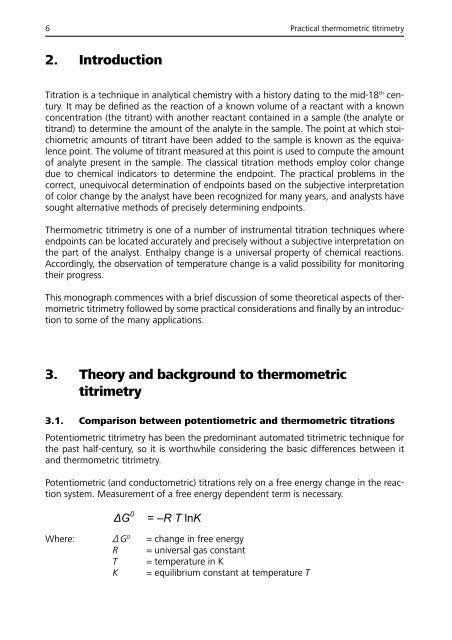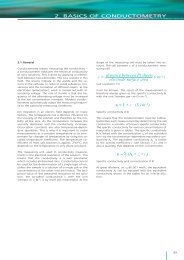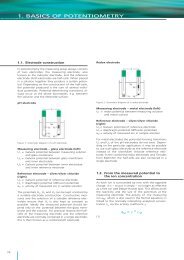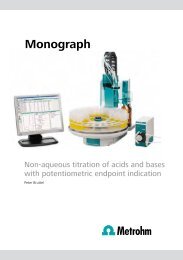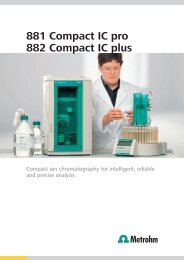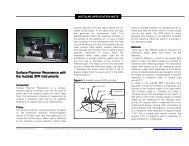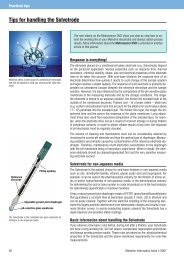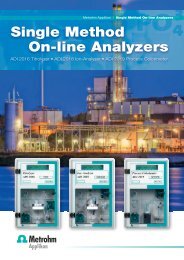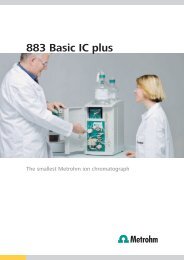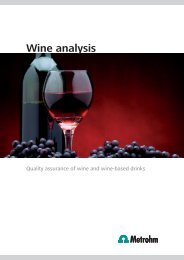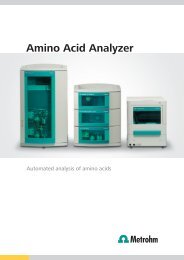Monograph - Metrohm
Monograph - Metrohm
Monograph - Metrohm
You also want an ePaper? Increase the reach of your titles
YUMPU automatically turns print PDFs into web optimized ePapers that Google loves.
Practical thermometric titrimetry<br />
2. Introduction<br />
Titration is a technique in analytical chemistry with a history dating to the mid-18 th century.<br />
It may be defined as the reaction of a known volume of a reactant with a known<br />
concentration (the titrant) with another reactant contained in a sample (the analyte or<br />
titrand) to determine the amount of the analyte in the sample. The point at which stoichiometric<br />
amounts of titrant have been added to the sample is known as the equivalence<br />
point. The volume of titrant measured at this point is used to compute the amount<br />
of analyte present in the sample. The classical titration methods employ color change<br />
due to chemical indicators to determine the endpoint. The practical problems in the<br />
correct, unequivocal determination of endpoints based on the subjective interpretation<br />
of color change by the analyst have been recognized for many years, and analysts have<br />
sought alternative methods of precisely determining endpoints.<br />
Thermometric titrimetry is one of a number of instrumental titration techniques where<br />
endpoints can be located accurately and precisely without a subjective interpretation on<br />
the part of the analyst. Enthalpy change is a universal property of chemical reactions.<br />
Accordingly, the observation of temperature change is a valid possibility for monitoring<br />
their progress.<br />
This monograph commences with a brief discussion of some theoretical aspects of thermometric<br />
titrimetry followed by some practical considerations and finally by an introduction<br />
to some of the many applications.<br />
3. Theory and background to thermometric<br />
titrimetry<br />
3.1. Comparison between potentiometric and thermometric titrations<br />
Potentiometric titrimetry has been the predominant automated titrimetric technique for<br />
the past half-century, so it is worthwhile considering the basic differences between it<br />
and thermometric titrimetry.<br />
Potentiometric (and conductometric) titrations rely on a free energy change in the reaction<br />
system. Measurement of a free energy dependent term is necessary.<br />
G 0<br />
= –R T lnK G0 = –R T lnK<br />
(1)<br />
Where:<br />
Δ G 0 = change in free energy<br />
R<br />
T<br />
K<br />
= universal gas constant<br />
= temperature in K<br />
= equilibrium constant at temperature T<br />
H 0 = G 0 + TS<br />
0 (2)


